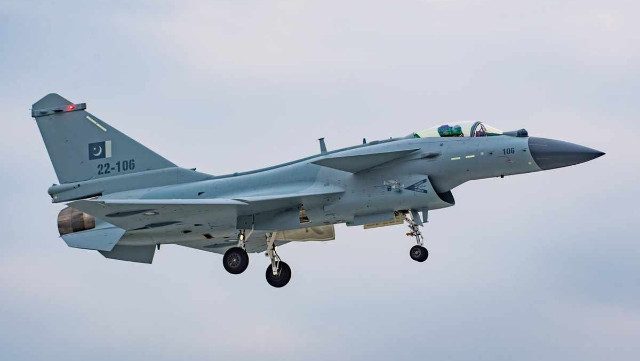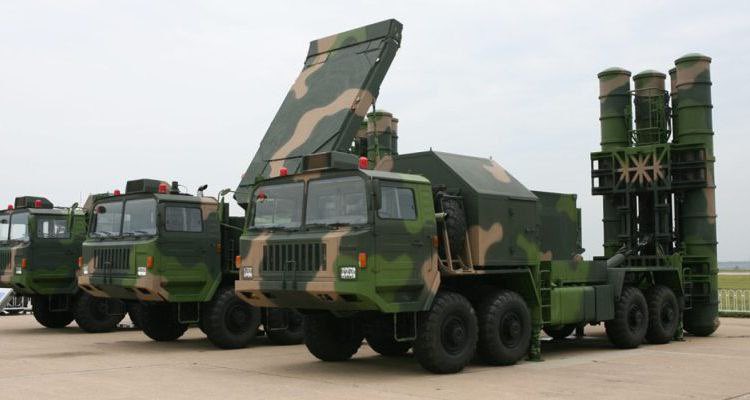Tehran Bolsters Air Defences with China’s HQ-9B: Strategic Gamechanger After Israel Clash
Reports reveal that Iran has quietly acquired advanced HQ-9B air defence batteries from China, marking a significant pivot towards Beijing’s military technology amid deepening tensions with Israel and the US.
In a development likely to unsettle military planners in Tel Aviv and Washington, Iran has reportedly taken delivery of several batteries of China’s HQ-9B long-range surface-to-air missile systems, reflecting a bold pivot towards Chinese defence technology after a punishing 12-day clash with Israel and its principal ally, the United States.
Arab sources speaking to regional media outlets claim the HQ-9B units — often described as comparable to or more capable than Russia’s highly-regarded S-400 Triumf — arrived on Iranian soil immediately after the ceasefire was declared on June 24.
“Iran is believed to have purchased the HQ-9B air defence system and has already received several batteries, paid for with oil,” an Arab intelligence source was quoted as saying.
With Pakistan having fielded the HQ-9B in live combat against India just weeks earlier, Tehran appears to be drawing lessons from its South Asian ally’s air defence strategy and performance.
China remains Iran’s single largest oil buyer, and both capitals have long deployed complex barter and grey-market trade routes to blunt the bite of international sanctions, especially on advanced weapons technology.
Arab media reports suggest that Washington and its Western partners have monitored the covert transfer of the Chinese-built systems to Iran, raising alarms about a shifting airpower balance across the Persian Gulf and the broader Middle East.
Current US estimates indicate that as much as 90 percent of Iran’s crude and condensate exports — valued in 2024 at over USD 40 billion (approx. RM187 billion) — flow eastward to China, often through intermediary nations including Malaysia to mask their final destination.

What remains unclear, however, is the exact number of HQ-9B batteries Beijing has committed to Tehran’s expanding air defence shield.
Regional analysts see the fresh HQ-9B deployment as a vivid signal that Iran’s military ties with China are poised to deepen, a trend reinforced by Tehran’s newfound appetite for the J-10C multirole fighter after Moscow repeatedly delayed deliveries of the Su-35.
The stealth-optimized J-10C — nicknamed by some in Pakistan as the “Rafale killer” after reports of its success in downing Indian Air Force Rafales in last month’s cross-border clashes — has become an attractive alternative for Tehran’s air force as it struggles with an ageing combat fleet.
Iranian Defence Minister Aziz Nasirzadeh’s recent presence in Qingdao for the Shanghai Cooperation Organisation (SCO) meeting, a Russia–China security bloc, has only fanned speculation that the J-10C purchase may soon follow the HQ-9B acquisition.
Regional defence sources suggest Tehran is now weighing whether China’s J-10C — backed by the formidable PL-15E beyond-visual-range (BVR) air-to-air missile — can bridge its capability gap more rapidly than the elusive Su-35 deal with Russia, which has been stuck for years.
International security experts believe the performance of the Pakistan Air Force’s J-10C jets during the brief but intense India–Pakistan aerial stand-off in May provided a real-world validation of the platform’s combat credentials.
Pakistan’s J-10Cs, armed with China’s next-generation PL-15E missiles, reportedly shot down three Rafale fighters and three other Indian jets, a claim that — if verified — underscores the operational impact of modern Chinese fighter-bomber doctrine in contested airspace.

For Tehran, integrating the J-10C into its order of battle would represent the biggest injection of fresh air combat capability in decades, as the Iranian Air Force continues to rely on legacy F-4 Phantoms, F-14 Tomcats, and MiG-29s procured during the Shah’s era more than half a century ago.
The stark limitations of Iran’s older aircraft — and its domestic Bavar-373 air defence system — were exposed during the 12-day confrontation with Israel, when multiple Israeli strikes reportedly evaded detection and interception.
The HQ-9B, developed by China’s CPMIEC, offers Tehran a leap forward in multi-layered air defence coverage, with an intercept envelope extending up to 260 kilometres and an engagement altitude ranging from 27 to 50 kilometres.
Each missile in the HQ-9B family can reportedly hit supersonic speeds of Mach 4.2 to Mach 4.7, enhancing its ability to counter stealth aircraft and evasive manoeuvres.
A core advantage of the HQ-9B is its advanced active phased-array radar, which enables it to detect and track low-RCS (radar cross-section) aircraft — including modern fifth-generation stealth fighters such as the US-made F-35 — at ranges exceeding 300 kilometres.
Each battery typically comprises a high-performance fire control radar, up to eight transporter erector launchers (TELs) carrying four missiles apiece, and a mobile command suite supported by logistic vehicles.
Pakistan began integrating the HQ-9B into its air defence network as early as 2021, viewing it as a critical hedge against India’s expanding combat air fleet and ballistic missile inventory.


